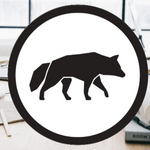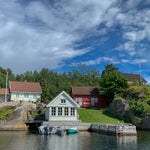Version 1 Product Updates
Wires and Green Boards
• 3 minutes read
In our last post, you saw the the hand-built prototypes come to life and there was something particularly inspiring about that stage of the process. Everything about Scout became more tangible in an instant. As promised, we’re going to continue to walk you through the process of where we’ve been since then, step-by-step. This update isn’t about visual progress, though, in the way that our last post was. The progress in this update is more about perfecting the bits and bytes.
Walking through our hardware lab, you can’t help but be captured by a sense of creation happening all around you. It is a hive of maker goodness. But, translating that feeling into pictures is tricky. Once the 3D printed prototypes have been whisked off to meetings, it’s back to business in the lab. The plastic casings are peeled off and the guts are the focus of attention. At that point, it’s on to the important tasks of iterating schematic designs, creating final board layouts and debugging software. That is what this post is all about. A series of pictures over a few weeks, while interesting, would be a repetitive display of colorful wires connecting various green boards.
The pictures below are a fairly representative set of said combinations of wires and green boards. So, what’s going on here? Well, a lot. The green board on the left (the STK600) is an evaluation board from Atmel. This board allowed the team to test different processors quickly and easily for the Scout base station. The silver box (a JTAGICE) allows us to pause code that is running on the processor for debugging and programming. The board on the bottom right is the evaluation kit for the GSM modem from Ublox that handles the cellular connection. And, finally, the board on the top right is the Zigbee module. It is through this module that the base station is able to communicate with the network of Scout sensors. These pieces combined represent the core functionality of the Scout base station.
Using this setup, the Scout team was able to hone in on final schematic designs and board layouts. Getting to that point set the stage for the next steps: board population and antenna matching. We’ll be covering that, and some non-hardware updates, in our next post.













